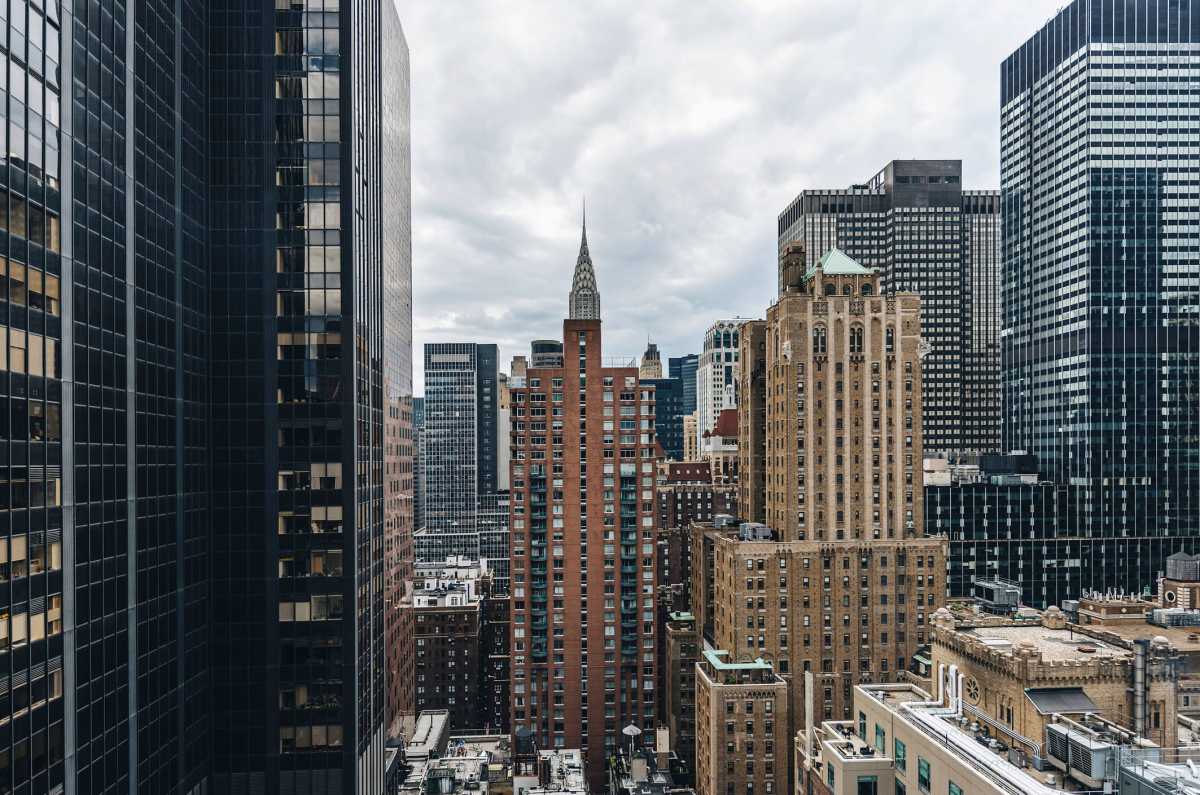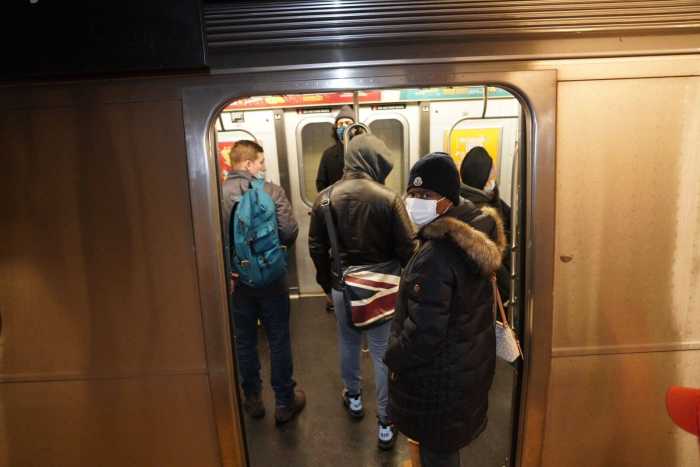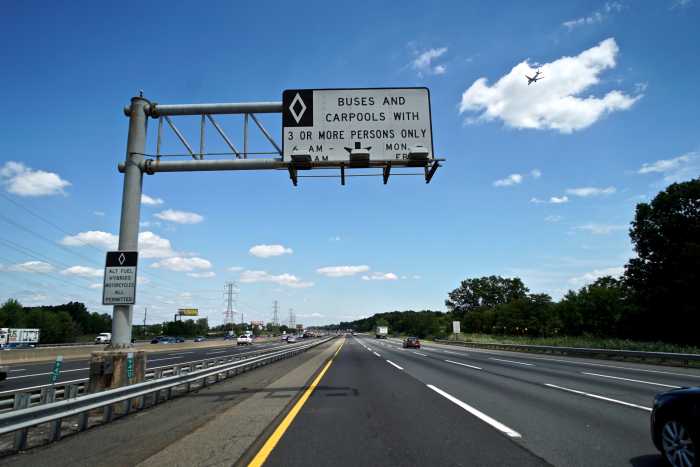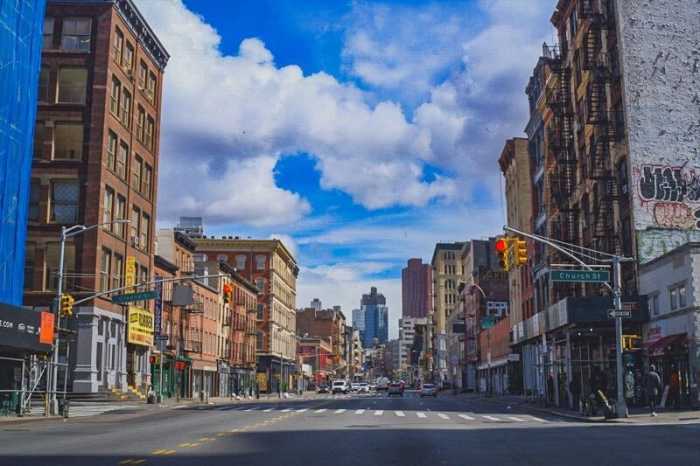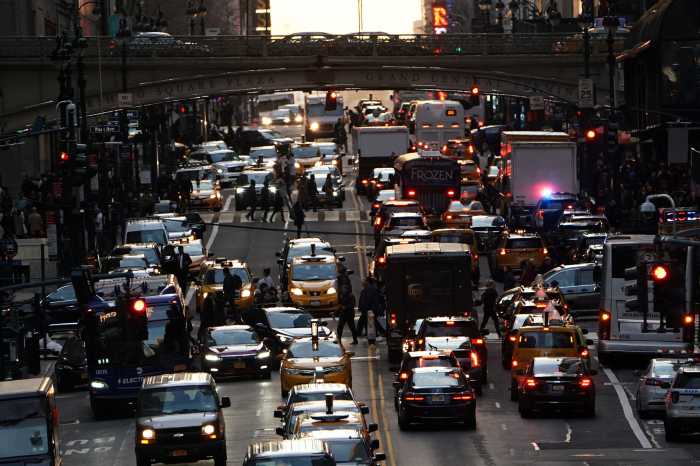Two years ago, the pandemic brought the hustle and bustle of New York City to a screeching halt. Those who could stayed home and avoided communal offices to protect themselves and their families from a potentially life-threatening disease. It was a dark chapter in our history. As we plan for a brighter future, we have to remind ourselves that while the pandemic affected us all, it did not affect us all equally.
Now as we re-open, the New Yorkers we failed during the pandemic are being failed again. Take air quality. In 2019, for example, passenger cars contributed to 23% of total emissions in New York City.[1] While commuters sitting in traffic may feel inconvenienced, the people living in the city’s poorest neighborhoods, which are often adjacent to highways and congested streets, are the ones breathing the dirtiest air and experiencing higher rates of childhood asthma.
At the height of the pandemic, there was a significant improvement in air quality as more affluent drivers worked from home. But now, as the city returns to normal, we are seeing an unfortunate return to the traffic, congestion and air pollution that New Yorkers have tolerated – and considered “normal” – for too long. The recent increase in traffic has been exacerbated by transit ridership remaining well below pre-pandemic levels and commuters with means opting to travel by car.
Reducing air pollution, particularly in environmental justice communities, was a core rationale for passing congestion pricing in 2019. Swift implementation of congestion pricing will not only help reduce dangerous air pollution; it will provide the funding desperately needed for a modern, clean, and reliable mass transit system – a system that is disproportionately relied upon by low-income New Yorkers.
New York City and its suburbs continue to rely on a bus and subway system that is underfunded and unreliable, resulting in regular delays and disruptions for many riders, especially those living in transit deserts, a problem that was exacerbated by a huge loss in ridership revenue during the COVID-19 pandemic. Congestion pricing will generate $15 billion in funds to finance the MTA’s essential capital program, which will not only improve the reliability of the system but also help expand train service to the East Bronx with the Penn Access project, extend the Second Avenue subway to East Harlem, build elevators at subway stations that are currently inaccessible to the disabled, and fund the purchase of emissions-free electric buses, which contribute substantially to reducing ambient air pollution.
While the benefits of implementing congestion pricing are significant, the consequences of not implementing the policy are profoundly serious. Without the funds generated by congestion pricing, New Yorkers will see increased subway, bus, and rail fares with major delays and disruptions, they’ll spend more time sitting in traffic, and they’ll experience the ill effects of worsening air pollution. Worse still, the communities that will bear the brunt of the burden will be the city’s low-income communities of color, who already live the farthest from reliable public transit options and breathe the City’s dirtiest air.
After years of delay by the Trump administration, we need to get congestion pricing back on track. After a regrettable slip during this/last week’s gubernatorial debate, Governor Hochul quickly reaffirmed her full-throated support for getting congestion pricing up and running as soon as possible. (Thank you, Governor!) There are a few key steps that the Governor, with the help of the federal government, can do to ensure congestion pricing is “turned on” in 2023.
First, the Governor must not rely on her staff but rather pick up the phone herself to urge Secretary of Transportation, Pete Buttigieg, to direct the Federal Highway Administration (FHWA) to expedite the process. By all indications, the agency is complicating the MTA’s attempt to complete the exhaustive environmental review, which is necessary before the new system can be turned on, within the FHWA-proscribed 16 month period. Second, the MTA – and the Governor who controls the MTA – must hold the line on toll exemptions. By statute, the MTA must raise a minimum of $1 billion in tolls per year to finance $15 billion in borrowing. So, by definition, if the MTA grants exemptions for one class of drivers, the rest of us will have to pay more to make up the lost revenue.
The bottom line is this: our public transit system is crippled, our air quality is deteriorating, our roads are increasingly dangerous, and we’re failing to deliver reliable transit and clean air to our most vulnerable citizens. So let’s implement congestion pricing now and ensure that our post-pandemic city once again becomes an international model for modern and equitable transportation.
Eddie Bautista is the Executive Director of the NYC Environmental Justice Alliance (NYC-EJA), and Alex Matthiessen was the founder and director of Move NY and advises Environmental Defense Fund on congestion pricing. He also is a founding partner at Natural Ventures, a boutique impact investing platform.



